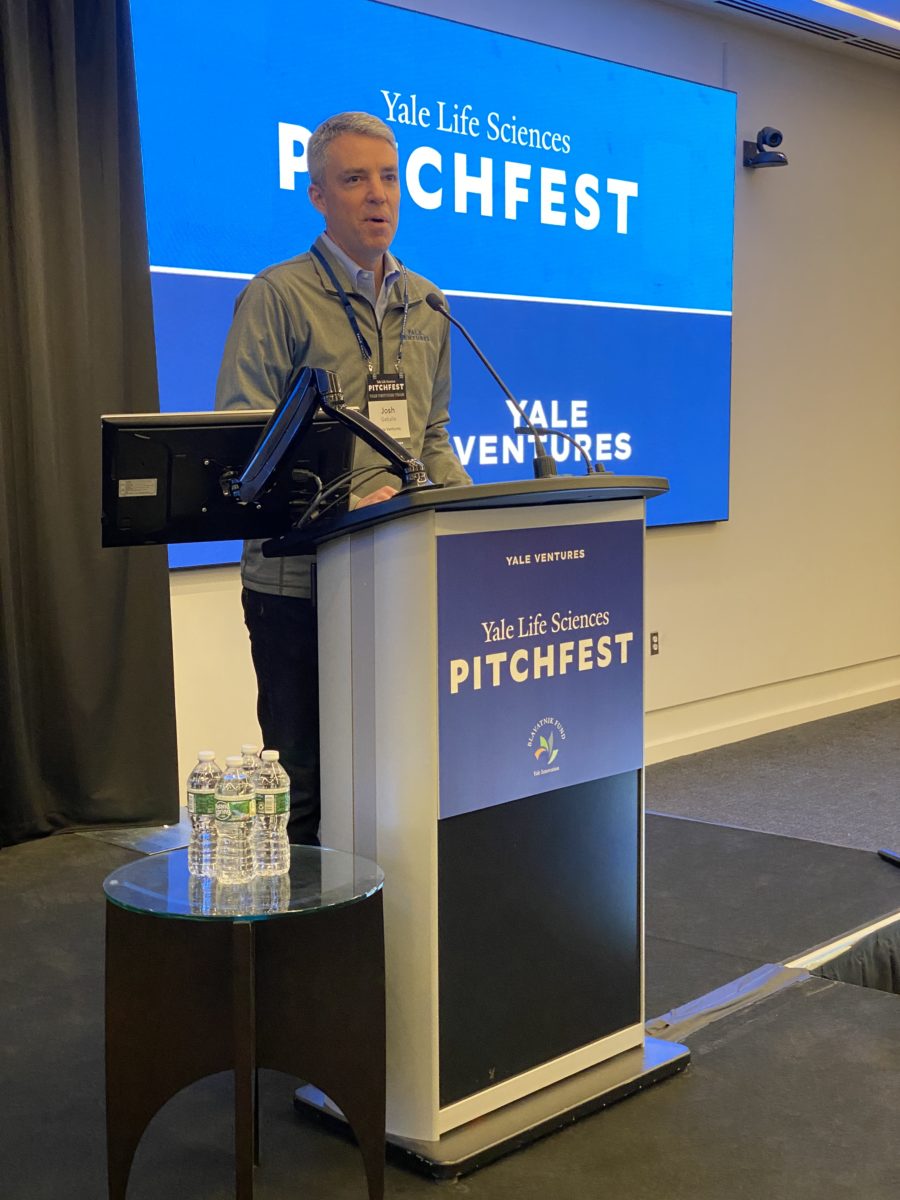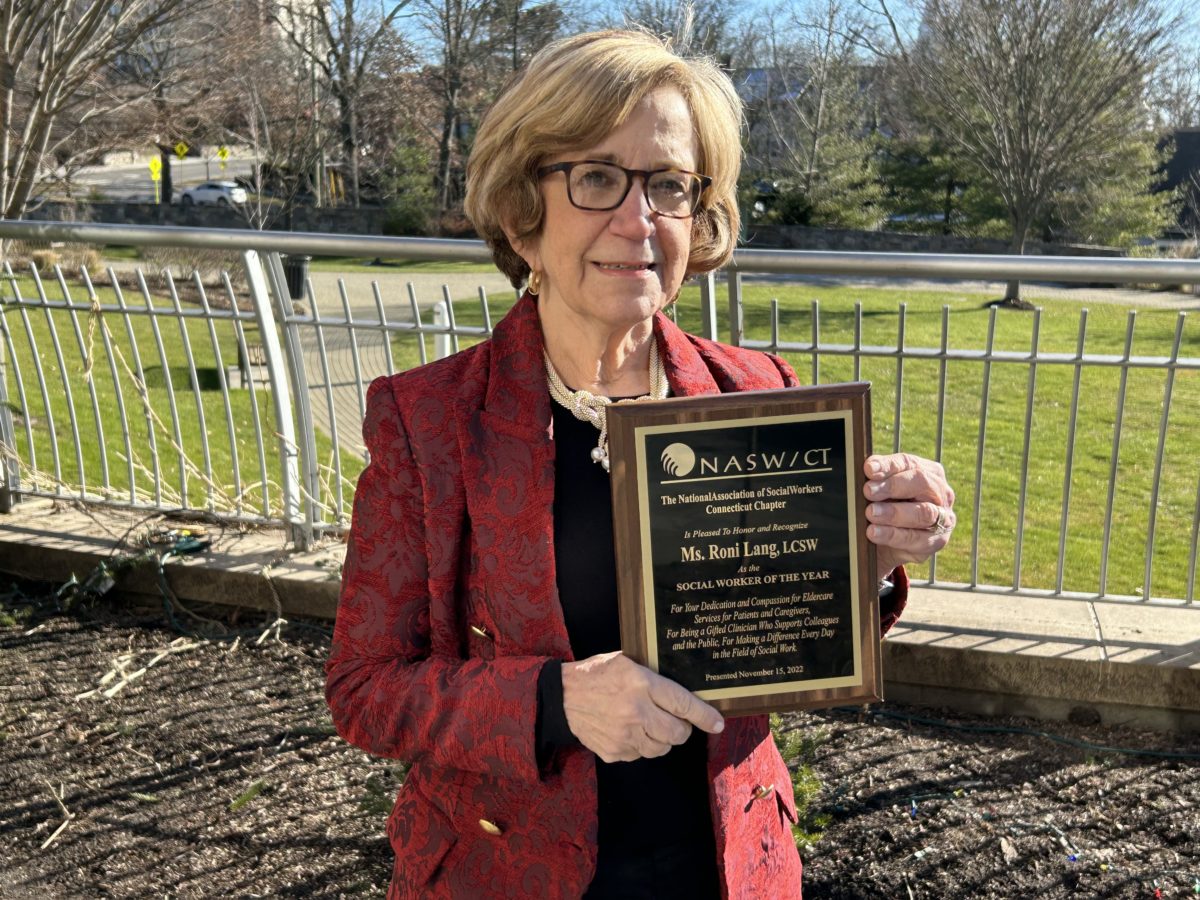The recent 2022 Yale Life Sciences Pitchfest presented by Yale Ventures featured pitches by 31 individuals from Yale University representing teams and organizations providing innovations in therapeutics and medical devices and digital health. The innovators sought monetary assistance courtesy of the Blavatnik Fund for Innovation at Yale, which supports Yale faculty in commercializing research and technology in life sciences.

“Many of them have startups that will take root here in New Haven and continue to build a local ecosystem,” said Josh Geballe, managing director of Yale Ventures.
The event spanned nine hours with presentations divided into four “pitch blocks.” The first and second pitch blocks dealt both dealt with therapeutics and medical devices.
For the first pitch block, presentations included Francine M. Foss, professor of medicine, hematology and cell therapy, who focused on targeted therapy for T cell lymphomas. According to Foss, half of patients with T cell lymphoma die within a few years with no curative modalities at present, constituting an unmet need. Foss”™ team”™s proposal is a novel mRNA that would be directed against CXCR5 using CXCL13 to target.
“The advantages of an mRNA CAR are increased safety, increased efficacy, a rapid manufacturing time of about two days and multi gene strategies,” she said. “If you have tumor cells within the T cell collection that you transduce, with an mRNA CAR, those tumor cells are going to be very short lived as the mRNA CARs are shorter lived in DNA CARs.”
Another presentation was from Ian Odell, assistant professor of dermatology, on epiregulin inhibition to treat scleroderma skin and lung fibrosis.
“There’s a huge unmet medical need for anti-fibrotic therapies,” Odell said, noting that scleroderma occurs in one in 50,000 adults every year with a median survival rate of around 10 years.
“Over the last few years, we looked at the pathogenesis of scleroderma and we discovered that epiregulin is a low affinity EGFR ligand that is expressed by DC3s, which are a subtype of dendritic cells,” he said.
The team then went on to develop a monoclonal antibody which was tested ex vivo and is currently seeking support from the Blavatnik fund to continue enabling the development of the already existing antibody.
Joseph M. Vinetz, professor of internal medicine, rounded off the first pitch block with his presentation on human leptospirosis vaccine development through animal health product development.
“We have a recombinant protein based upon genomics that will be effective against all forms of leptospirosis,” Vinetz said. “The animal models are fabulous and easy to do from in mice and hamsters that will predict not just animal targets like dogs or cattle, but will be the same vaccine used in humans. So, the animal vaccine development will lead to the exact same candidate that goes to the FDA for clinical trials.”
Vinetz went on to say that the Blavatnik funding would enable his team to make a pilot lot of vaccines for hamster experiments, and noted that “we will be taking this funding towards human vaccine development simultaneously.”
The second pitch block was headed by Anthony Koleske, ensign professor of molecular biophysics and biochemistry and of neuroscience, who gave his presentation on a novel treatment for schizophrenia.
“This is a disorder that affects about 1% of the world’s population,” Koleske said. “Currently, we manage the symptoms of schizophrenia with two different classes of drugs, but both of them are very limited in their efficacy and have major side effects, and as a result, schizophrenia is very poorly managed, and leads to lifelong debilitation and a lifespan that”™s shortened on average by 12 to 15 years.”
Koleske and his team have aimed to develop small molecule regulators and “target x,” an enzyme shown to regulate normal development and synaptic transmission.
“Most of the schizophrenia variants are premature stop codons that lead to a decrease in activity of target x,” he said. “And the goal here would be to develop activators to relieve this deficiency and increase activity therapeutically.”
Ruslan Medzhitov, professor of immunobiology, spoke of a new class of therapeutics for inflammatory diseases and conditions such as sepsis.
“More than a quarter million people die in the US alone from this condition,” he said. “There are currently no therapeutics at all.”
The team”™s approach, instead of targeting inflammation, was to target the response to inflammation.
“Over the course of a few years studying this problem, we consistently have been finding that the key here was the metabolic state of the organism and the tissues, and that promoting tolerance for inflammatory damage had to do with metabolic programming of the organism,” Medzhitov continued, “which is the reason why when we are very sick, we lose appetite ”“ that is a protective response of the body.”
On testing done on mice, it was found that after being given a strong inflammatory signal, their mortality rate increased upon fasting and when given a treatment. It was found that if they ate, all of them would die.
“This has to do with glucose,” he said. “Just giving them glucose leads to 100% mortality. Giving them 2-Deoxy-D-glucose, which blocked glucose metabolism, leads to 100% survival.”
Jing Yan, assistant professor of molecular, cellular and developmental biology, had his presentation focus on biofilm-inspired bioadhesives. Jing”™s team discovered a new class of peptides found in bacterial biofilms which can be used as bioadhesives.
“We will plan to systematically test the application of this new glue, and to optimize the production process,” Jing said. He elaborated that the bioadhesive would have numerous applications, such as the sealing of leakages and mobilization of biomedical devices onto tissue. And as mussel-inspired glue can be adhesive while underwater, it can also be used in the fishing industry and in sea transportation. What we are trying to do is to test the adhesive strength of our peptide on various tissues, and between tissues and engineering surfaces. We are in the very early stage, but we foresee a lot of potential interest in the market.”
Photo: Josh Geballe, managing director of Yale Ventures; photo by Edward Arriaza.


















